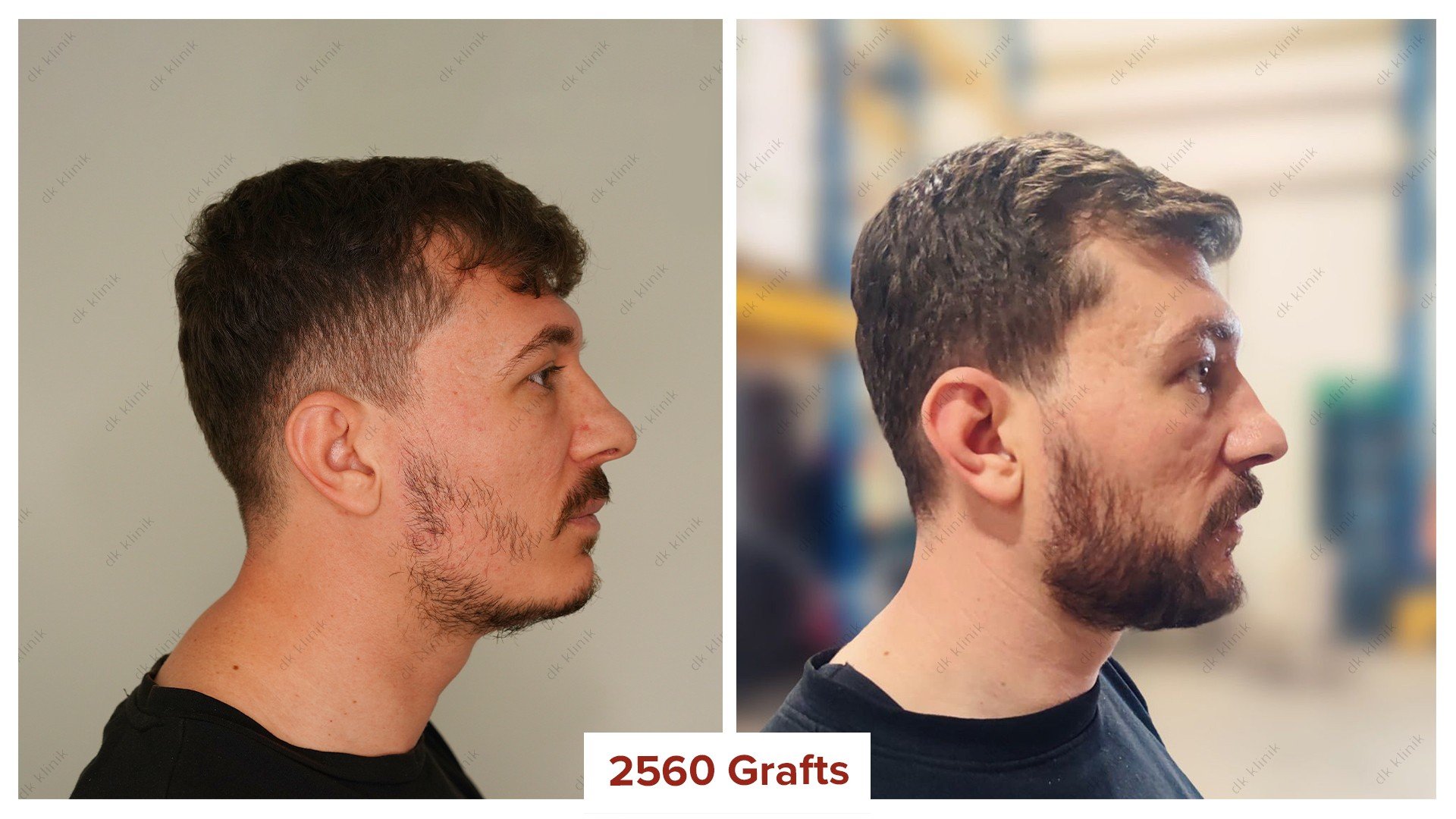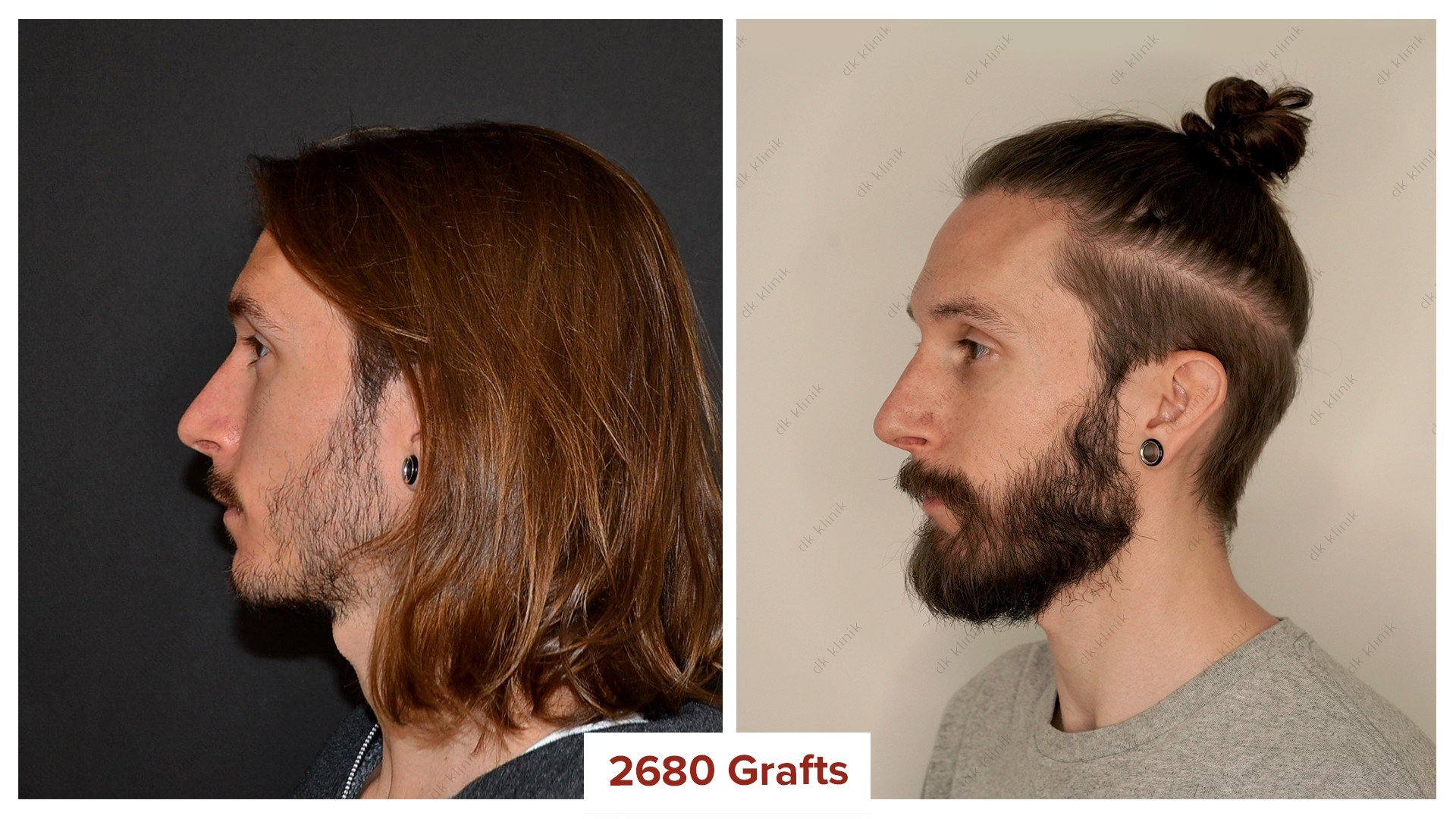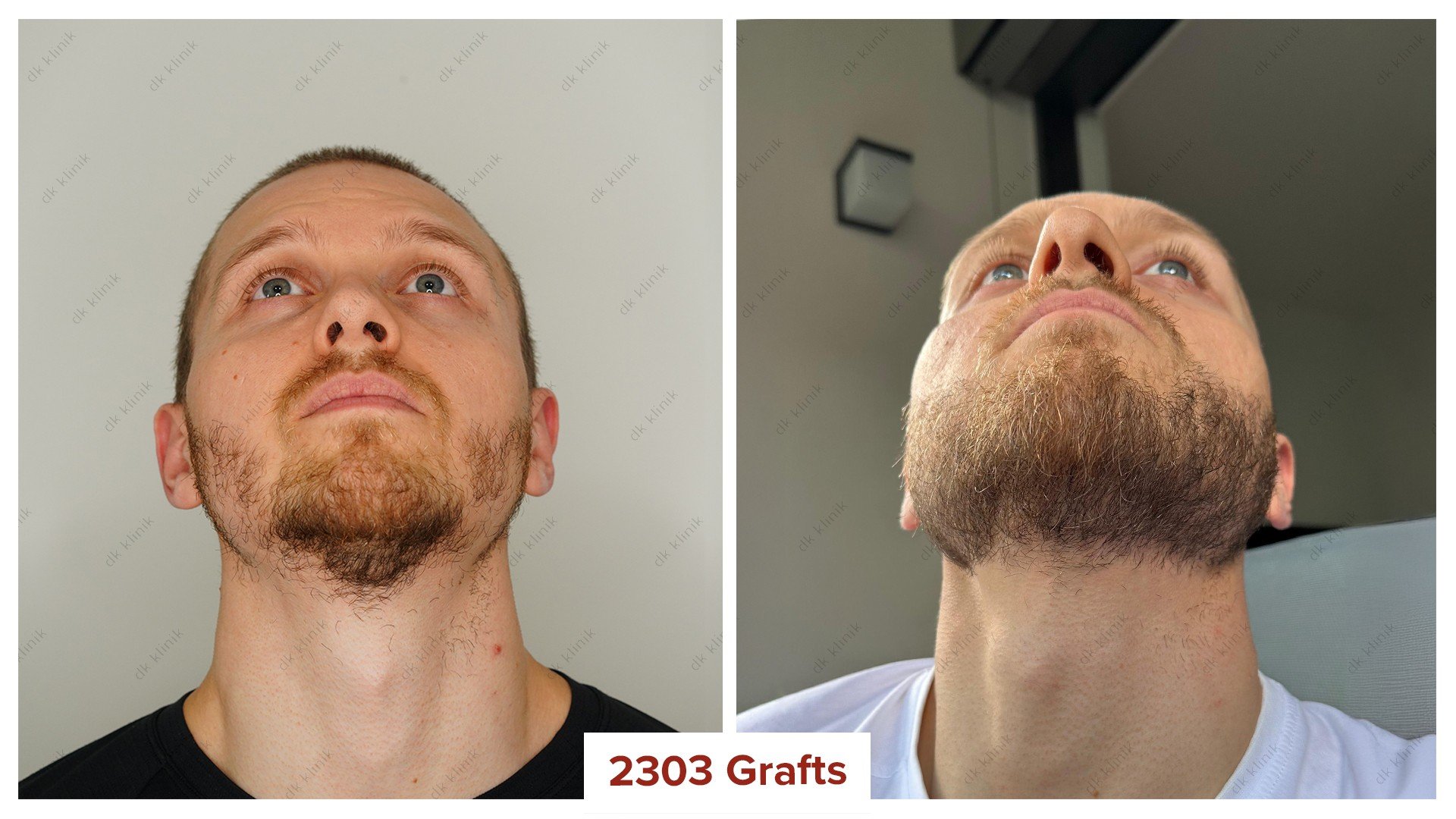Beard Transplant Antalya at DK Klinik: Everything You Need to Know
'' During consultations, I often explain to patients that the success of a beard transplant lies in understanding the natural growth direction of facial hair. This ensures results that look authentic and complement the patient's facial structure.''
Dermatologist Meltem Şentürk
Today, hair transplantation has become a widely accepted procedure, and most patients are highly satisfied with the results. As a result, beard transplantation has also gained significant popularity.
From our observations, the beard is at least as important as the hair for some of our patients, and for others, it holds even greater value.
Thanks to advanced techniques such as DHI and FUE, combined with over 20 years of experience, achieving highly impressive results has become possible.
Why Choose DK Klinik in Antalya for Beard Transplant?
- We are one of the most experienced dermatology clinics in Antalya, established in 2002, with over 23 years of expertise in hair and beard transplantation.
- Our clinic is one of the few in Turkey with specialized experience in both FUE and DHI techniques.
- We are the first clinic in Antalya licensed by the Ministry of Health for hair and beard transplantation.
- We are active members of international organizations such as ISHRS, EADV, and ESCAD.
- Patient satisfaction has been our core principle since the day we were founded. You can review our patient feedbacks here.
- Understanding the importance of postoperative care, we provide detailed instructions and establish a WhatsApp group for our patients so they can easily reach us with any questions after returning home.
What is a Beard Transplant?
Beard transplantation is a surgical procedure where grafts are taken from the safe donor zone (typically the nape of the neck, which is resistant to shedding) and transplanted into areas where beard growth is sparse or absent.
When performed under the supervision of a licensed and experienced dermatologist or plastic surgeon, the success rate of beard transplants is remarkably high.
Techniques We Use in Beard Transplants
Although both FUE and DHI techniques yield successful results, we predominantly use the DHI technique in our clinic unless the patient has specific preferences or conditions.
- Precision and Expertise: Our team's expertise in facial anatomy ensures every graft is placed at the correct angle, depth, and direction to achieve a natural finish.
- Patient Collaboration: While we offer our professional recommendations, we always consider the patient's preferences and collaborate to create a design that balances their expectations with feasibility.
"DHI is particularly effective for patients looking to enhance specific areas, such as sideburns or a defined goatee, due to its precision."
Dermatologist Meltem Şentürk
Before-After



Step-by-Step Beard Transplant Process at DK Klinik
1. Consultation and Booking Phase
After contacting us via WhatsApp, email, Instagram, or phone, we request photos of your face from specific angles and assess your health condition to determine your suitability for a beard transplant.
- Our team evaluates your photos to estimate the number of grafts needed.
- Once you decide to proceed, we schedule your operation and confirm the date after you book your flight tickets.
- A 20% down payment is required to secure your appointment.
2. Blood Analysis
To ensure the safety of both the patient and our team, we perform comprehensive blood tests the day before the operation to check for vitamin, mineral, and hormone levels.
- Why This Matters: These tests help identify underlying conditions that might affect beard growth or healing.
- If necessary, we provide medication recommendations after the procedure or refer patients to relevant specialists.
3. Facial Mapping and Beard Design
Designing a beard requires detailed analysis and planning.
- Facial Mapping: The face is divided into regions and marked with a pencil to guide the placement of grafts.
- Growth Angles: Facial hair grows at varied angles, requiring careful design:
- Jawline: Steeper angles (30–45 degrees).
- Cheeks: Flatter angles (15–30 degrees).
- Sideburns: Oblique angles towards the cheeks.
Due to these differences, beard design often takes longer than hairline design.
4. Local Anesthesia Application
Local anesthesia is administered through gentle injections to numb the beard area.
- Since facial skin is more sensitive than the scalp, the injections are applied carefully to minimize discomfort.
- At DK Klinik, we use an FDA-approved pain control device to enhance patient comfort during this step.
5. Implantation of Grafts
Using a Choi implanter pen, grafts are placed in a precise and controlled manner:
- Angle and Depth: Each graft is placed at the appropriate angle and depth for a natural look.
- Customized Placement:
- Sideburns: Flatter angles for seamless blending.
- Chin: Steeper angles to create a fuller, more masculine appearance.
''We adjust graft placement for each facial area. For example, sideburns require flatter angles, while the chin needs steeper placement to create a full, masculine effect.''
Prof. Dr. Ümit Kemal Şentürk

